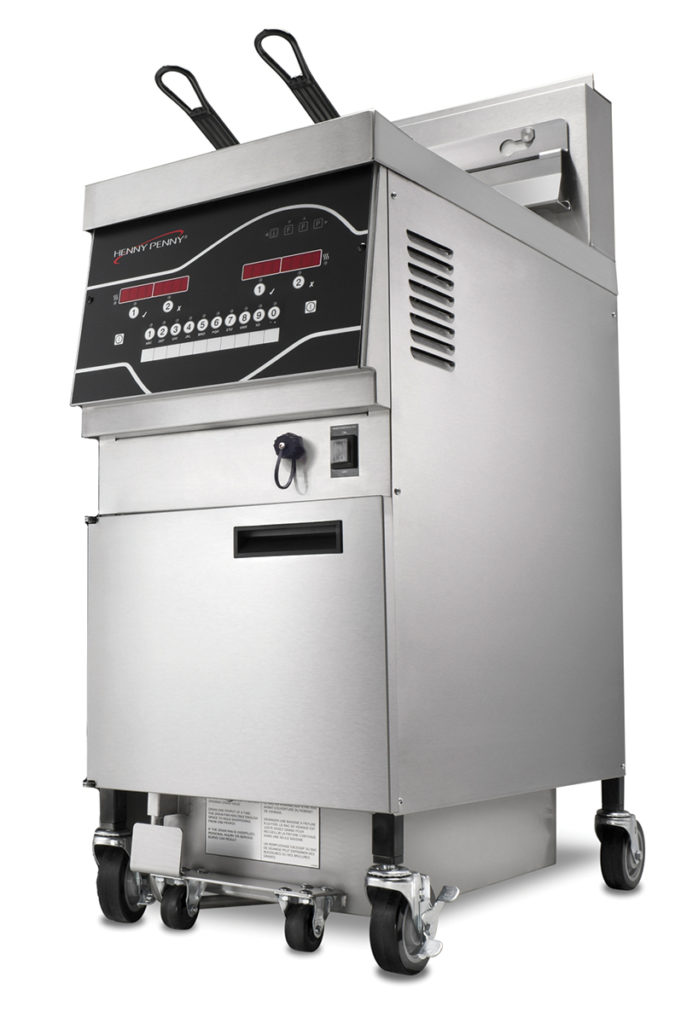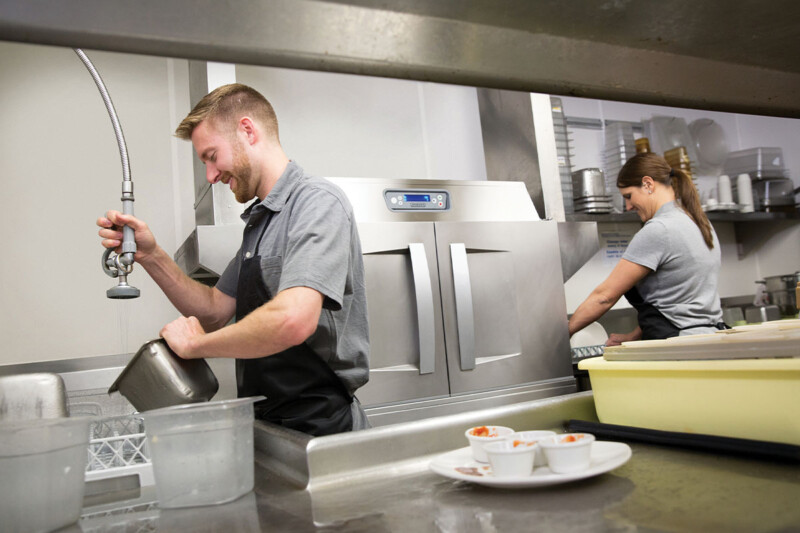
Pay attention to utilities. If specifying for a new bid, consider the types of utilities you have access to (natural gas is only available up to a certain elevation) as well as the utilities’ cost. If you’re choosing a fryer for an existing kitchen, make sure your fryer will be compatible to hook-ups. One manufacturer says a common mistake that operators make is specifying a large, four-well fryer that requires a 1-in. diameter gas line when the space only has a ¾-in. connection available.
Find the right size that also offers menu expansion. Follow manufacturers’ guidelines to identify the right fryer capacity for your output needs, that is, double the oil capacity to determine how much product you can produce in an hour. But don’t stop there. Manufacturers also recommend considering whether you’ll be expanding either what you’re frying or how much of it in the near future and sizing up accordingly to give your operation some options.
Oil is king. Cooking oil is a major expense in any foodservice operation and pushing your oil beyond its limits is immediately noticeable in the taste and quality of your concept’s fried food. To that end, select a gas fryer that offers you the best possible chances for extending the life of your oil. Take note of the size of the cold zone to minimize the effect of sediments and pay attention to filtration systems. Consider how special features such as an oil quality sensor, auto topoff, and automated basket lifts can help you preserve the life of your oil.
Consider life cycle costs. As with any equipment specification, one of the biggest mistakes when choosing a fryer, according to manufacturers, is not weighing that initial purchase cost against the life cycle costs. For fryers, that means examining how quickly you’ll be replacing oil, any time or safety effects on staff, and how efficiently the equipment uses the utility. “Most operators that buy an entry-level fryer are not as interested in necessarily the total cost of ownership because it might be a startup-type of restaurant and they’re not sure if they’re going to last a year or two,” says one manufacturer’s director of sales. “Whenever they get set, they should always move upward to a unit with a filtration system. Filtration systems will quickly
RELATED CONTENT
- Advertisement -
- Advertisement -
- Advertisement -
TRENDING NOW
- Advertisement -
- Advertisement -
- Advertisement -


